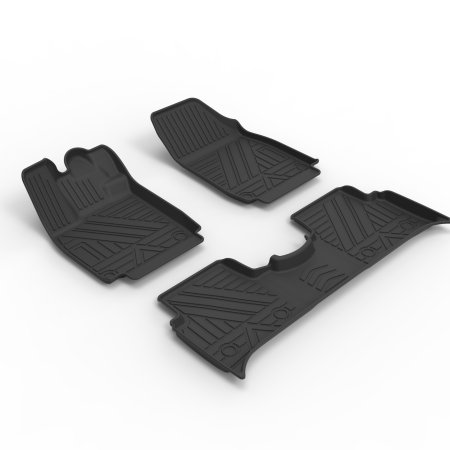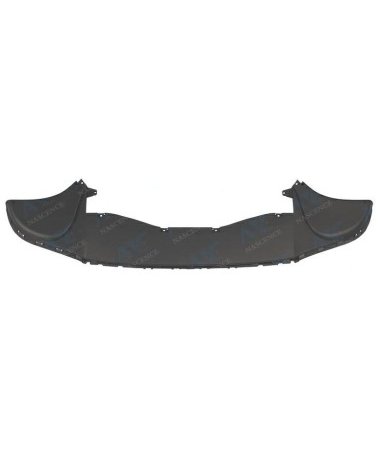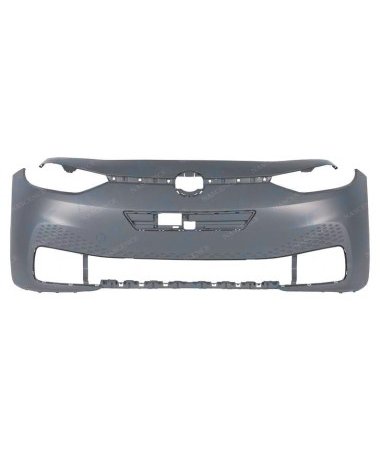OEM vs. Aftermarket VW ID3 Parts:
Which Is Right for Your Vehicle?
Understanding OEM Parts
When it comes to keeping your VW ID3 in top shape, knowing about OEM (Original Equipment Manufacturer) parts is essential. These components come directly from the vehicle’s original maker, ensuring they meet precise standards. Let’s explore what OEM parts are, their benefits, and why they might not always be the best choice.
Definition and Overview
OEM Parts are the exact replacements for the original components that came with your vehicle. Crafted by the same manufacturer or an authorized licensee, these parts are designed to match the specifications and performance of the originals. So, when you install an OEM part, you’re essentially getting a duplicate of the part that was first installed on your VW ID3.
Benefits of OEM Parts
Quality Assurance
Consistent Standards: OEM parts are engineered to the highest standards. This means reliability and performance that closely align with the manufacturer’s original specifications. These parts undergo stringent quality control, ensuring that they meet the exacting standards required for your vehicle.
Source: Volkswagen’s official site confirms that OEM parts are rigorously tested to ensure they meet the high safety and performance standards set by the manufacturer.
Perfect Fit and Compatibility
Seamless Integration: One of the standout features of OEM parts is their perfect fit. Designed specifically for your VW ID3, they integrate seamlessly with existing components. This eliminates compatibility issues and simplifies the installation process.
Reference: According to Car and Driver, OEM parts typically provide a better fit than aftermarket options, ensuring that your vehicle operates as intended.
Warranty Coverage
Peace of Mind: OEM parts often come with a warranty that matches the original vehicle warranty. This means that if something goes wrong, you’re covered. The warranty can provide reassurance about the part’s durability and performance.
Source: AutoZone notes that many OEM parts come with robust warranties, offering protection against defects and contributing to long-term vehicle maintenance.
Drawbacks of OEM Parts
Cost
Higher Price: The cost of OEM parts can be a significant consideration. Generally, these parts are more expensive than their aftermarket counterparts. While the higher price reflects their quality and precision, it can be a concern for those on a tight budget.
Reference: Edmunds provides a detailed comparison, showing how OEM parts tend to cost more compared to aftermarket alternatives.
Availability
Potential Delays: Depending on the age of your VW ID3 and your location, OEM parts might not always be readily available. For older models, finding specific OEM parts could lead to delays in repairs or maintenance.
Source: J.D. Power discusses the challenges of sourcing OEM parts, highlighting how availability can vary based on vehicle model year and geographical location.
OEM parts come with a host of benefits, including quality assurance, perfect fit, and strong warranty coverage. However, they also have drawbacks such as higher costs and potential availability issues. Understanding these aspects will help you make a more informed choice about maintaining your VW ID3.
Exploring Aftermarket Parts
When considering parts for your VW ID3, aftermarket options present a different set of advantages and challenges compared to OEM parts. These components, made by third-party manufacturers, can offer a variety of benefits but also come with potential risks. Let’s explore what aftermarket parts are, their benefits, and their drawbacks.
Definition and Overview
Aftermarket Parts are replacement components made by manufacturers other than the original vehicle maker. Unlike OEM parts, which are produced by the vehicle’s manufacturer or an authorized licensee, aftermarket parts are created to fit a range of vehicles and might not always meet the original standards. These parts are designed to replace or enhance the existing components of your VW ID3, often offering different features or specifications.
Benefits of Aftermarket Parts
Cost-Effectiveness
Affordable Options: One of the primary advantages of aftermarket parts is their cost. These parts are generally less expensive than OEM components, making them a budget-friendly choice for vehicle repairs and upgrades. The lower cost does not always mean lower quality, but it can be an attractive option for those looking to save money.
Source: According to AutoWeek, aftermarket parts can be a more economical choice without necessarily compromising on quality.
Variety and Customization
Wide Selection: Aftermarket parts offer a vast array of options, from basic replacements to performance-enhancing upgrades. Whether you’re looking for improved performance or aesthetic modifications, aftermarket parts provide diverse choices that cater to specific needs and preferences.
Reference: Car and Driver highlights how aftermarket parts can offer a range of customization options that OEM parts might not provide.
Innovative Features
Advanced Technology: Some aftermarket parts come with advanced features or technology not available with OEM components. For example, aftermarket performance parts might include enhancements that improve your VW ID3’s power, handling, or efficiency.
Source: MotorTrend discusses how aftermarket parts can offer cutting-edge technology and performance improvements that are not always present in OEM options.
Drawbacks of Aftermarket Parts
Quality Variability
Inconsistent Standards: The quality of aftermarket parts can vary widely. While some are made to high standards, others may not match the durability or performance of OEM components. It’s crucial to research and choose reputable brands to avoid subpar parts.
Reference: Edmunds warns that the variability in aftermarket part quality means buyers need to be diligent about verifying the reliability of the parts they purchase.
Warranty Issues
Limited Coverage: Aftermarket parts often come with limited or no warranty compared to OEM parts. This lack of warranty can be a concern if the part fails prematurely or causes issues with your vehicle.
Source: AutoZone explains that many aftermarket parts lack comprehensive warranties, which can impact long-term vehicle maintenance.
Fit and Compatibility
Potential Fit Issues: Since aftermarket parts are designed to fit a range of vehicles, they might not always align perfectly with your VW ID3. This can lead to installation difficulties and compatibility issues that might affect the vehicle’s performance or safety.
Reference: J.D. Power discusses the importance of ensuring that aftermarket parts are compatible with your specific vehicle model to avoid installation and performance problems.
Aftermarket parts offer numerous benefits, such as cost savings, variety, and innovative features, but they also come with potential drawbacks, including quality variability, limited warranties, and possible fit issues. By carefully evaluating these factors, you can make a more informed decision about whether aftermarket parts are the right choice for your VW ID3.
Comparing Quality and Performance
Deciding between OEM and aftermarket parts for your VW ID3 is not just about preference—it’s about understanding how each option impacts quality and performance. Both types of parts have their own strengths and potential pitfalls, so let’s dive into a detailed comparison to help you make the best choice for your vehicle.
Quality Metrics
Quality is a critical factor when evaluating OEM versus aftermarket parts. Here’s how they stack up:
OEM Parts
Consistent Standards: OEM parts are crafted to the exact standards established by the vehicle’s original manufacturer. This consistency ensures that these parts meet or exceed the original specifications. They’re designed to be direct replacements, fitting perfectly and performing as expected.
Source: Volkswagen’s official site confirms that OEM parts are subjected to rigorous quality control processes to uphold high standards. This ensures each part integrates seamlessly with your VW ID3, maintaining the vehicle’s performance and safety.
Aftermarket Parts
Variable Quality: Aftermarket parts come from a range of manufacturers, resulting in a wide variance in quality. While some aftermarket parts are designed to high standards, others may fall short. The key is to select parts from reputable brands with positive reviews to mitigate risks associated with lower-quality options.
Reference: Edmunds underscores the necessity of choosing well-reviewed aftermarket parts. Investing time in research can help avoid potential issues related to performance and durability.
Performance Impact
The choice between OEM and aftermarket parts can significantly influence your VW ID3’s performance. Here’s a closer look:
OEM Parts
Optimal Performance: OEM parts are engineered specifically for your vehicle, ensuring they perform optimally and integrate perfectly with existing systems. This means you get the same level of performance as when your vehicle was first manufactured.
Source: Car and Driver emphasizes that OEM parts are tailored to meet the precise needs of your vehicle, which often results in better overall performance and reliability.
Aftermarket Parts
Potential Enhancements: Aftermarket parts sometimes offer performance enhancements, such as increased horsepower or improved fuel efficiency. However, these benefits come with the caveat of variable quality. A high-quality aftermarket part can enhance your vehicle, but a poorly made one might introduce performance issues.
Reference: MotorTrend discusses how aftermarket performance parts can provide noticeable upgrades, but the impact varies based on the part’s quality and compatibility with your VW ID3.
Cost Considerations and Budgeting
Cost is a significant factor when maintaining or repairing your VW ID3. Deciding between OEM and aftermarket parts involves more than just the price of the parts themselves. This section will explore the cost implications of choosing between OEM and aftermarket parts and provide budgeting tips to help you make an informed decision.
Cost of OEM Parts
OEM Parts generally come with a higher price tag compared to aftermarket alternatives. Here’s why:
Higher Price Tag
Premium Cost: OEM parts are often more expensive due to their high manufacturing standards and the cost associated with sourcing them directly from the vehicle manufacturer.
Source: According to Volkswagen’s official site, OEM parts are priced higher due to their guaranteed quality and exact fit.
Justifying the Cost
Durability and Reliability: The higher cost of OEM parts is justified by their reliability and compatibility with your VW ID3. They are designed to meet the original specifications, which can reduce the likelihood of issues and the need for frequent replacements.
Reference: Edmunds discusses how OEM parts often offer better long-term value despite the higher upfront cost.
Cost of Aftermarket Parts
Aftermarket Parts offer a wide range of prices, which can be more budget-friendly:
Variable Pricing
Lower Initial Cost: Aftermarket parts are generally less expensive, which can be appealing for those looking to save money on repairs or upgrades.
Source: AutoZone provides an overview of the cost differences between OEM and aftermarket parts, highlighting the potential for significant savings with aftermarket options.
Potential Hidden Costs
Quality Variability: While the initial cost is lower, the variability in quality among aftermarket parts can lead to additional costs in the long run. Poor-quality parts may require more frequent replacements or cause damage to other components.
Reference: Car and Driver notes that while aftermarket parts can be cheaper, the risk of inconsistent quality might lead to unexpected costs over time.
Budgeting Tips
When budgeting for parts and repairs, consider the following tips:
Assess Your Needs
Evaluate Priorities: Determine which parts are critical for your VW ID3’s performance and safety. For essential components like brakes or air filters, investing in high-quality parts—whether OEM or reputable aftermarket—can be more cost-effective in the long run.
Source: J.D. Power suggests prioritizing critical repairs with higher-quality parts to avoid recurring issues and additional costs.
Research and Compare Prices
Shop Around: Compare prices for both OEM and aftermarket parts from different suppliers. Sometimes, authorized dealers offer promotions or discounts that can make OEM parts more affordable.
Reference: Edmunds provides tips on how to find the best deals on automotive parts, including how to use price comparison tools effectively.
Consider the Total Cost of Ownership
Long-Term Costs: Evaluate the total cost of ownership, including potential repair frequency and associated labor costs. Sometimes, spending more upfront on higher-quality parts can save you money over time by reducing the need for frequent repairs.
Source: MotorTrend explores how considering long-term costs can help in making a more economical decision.
Installation and Maintenance Considerations
Choosing between OEM and aftermarket parts for your VW ID3 isn’t just about the initial cost; how these parts are installed and maintained plays a crucial role in their overall performance and lifespan. Understanding these aspects will help you make a more informed decision and keep your vehicle in peak condition.
Installation Factors
OEM Parts Installation
OEM parts are like the original recipe—made to fit perfectly with your VW ID3’s existing components. They’re manufactured to exacting standards, ensuring a seamless fit and function.
- Precision Fit: OEM parts are designed to meet the precise specifications set by Volkswagen. This means they fit perfectly without the need for adjustments or modifications.
- Expert Installation: While DIY enthusiasts might be tempted, professional installation is often recommended. Experts ensure that the part integrates flawlessly with your vehicle’s systems.
- Source: According to Volkswagen’s official site, OEM parts undergo stringent quality checks that guarantee their fit and performance.
Aftermarket Parts Installation
Aftermarket parts can vary widely. Some fit as well as OEM parts, while others may need adjustments. This variability can affect installation ease and overall performance.
- Fit Variability: Not all aftermarket parts are created equal. Some might fit well, while others could require modifications. This can lead to installation challenges.
- DIY vs. Professional Help: While some aftermarket parts are straightforward to install, others might benefit from professional attention to avoid issues and ensure proper functionality.
- Reference: AutoZone highlights that careful selection and installation of aftermarket parts can mitigate potential fit and performance problems.
Maintenance Considerations
OEM Parts Maintenance
Maintaining OEM parts is generally straightforward. Since they match the original specifications, they often require the same care and maintenance as the parts they replace.
- Routine Maintenance: Follow Volkswagen’s recommended maintenance schedule. Regular inspections and timely replacements help maintain optimal performance.
- Durability: OEM parts are built to last, but regular maintenance is crucial to ensure they continue to operate as intended.
- Source: Volkswagen Official Site provides detailed maintenance schedules and tips for keeping OEM parts in top shape.
Aftermarket Parts Maintenance
The maintenance needs of aftermarket parts can vary based on their quality and usage conditions. Some may require more frequent checks and maintenance compared to OEM parts.
- Quality Impact: Higher-quality aftermarket parts often require maintenance similar to OEM parts, while lower-quality options might need more frequent attention.
- Warranty Considerations: Check the warranty terms for aftermarket parts. Some may offer comprehensive coverage, while others might be more limited.
- Reference: D. Power suggests that understanding the maintenance requirements of your aftermarket parts can help avoid unexpected issues and costs.
Choosing Between DIY and Professional Installation
Professional Installation
- Expertise Required: For complex parts or if you’re unsure about the installation, professional help can ensure that the parts are installed correctly and function as expected.
- Peace of Mind: Professionals bring experience and the right tools, which can prevent potential issues down the road.
DIY Installation
- Cost Savings: Installing parts yourself can save money, but it requires a good understanding of the process and the right tools.
- Instructions: Always follow the manufacturer’s installation instructions carefully. Missteps can lead to poor performance or damage.
- Source: Car and Driver provides tips on DIY installations and highlights common mistakes to avoid.
In conclusion, no matter the OEM or Aftermarket VW ID3 parts you choose, finding a reliable VW ID3 parts supplier is very important.
Kylin EV Parts Ltd is located in Guangzhou, the hub of China’s automotive parts industry. Established in 2013, we focus on the supply chain of new energy automotive parts, providing brand solutions for entire vehicle series from a screw to exterior components, connecting the upstream and downstream supply chains, and forming strategic alliances with production factories through customization, alliance. Adhering to the principle of ensuring the quality of a component is equal to protecting the safety of a family.
In 2022, our international trade department was established, focusing on the integration of Tesla, VW, and BYD, as well as aftermarket modifications. As China’s premier B2B supplier, we offer a comprehensive service in integrating EV spare parts for numerous foreign sellers, both online and offline.
We extend a cordial invitation to collaborate with foreign dealers and explore OEM and ODM partnerships for our products. With our commitment to the most professional service, the highest quality products, and the most reasonable prices, we endeavor to provide unparalleled support.














